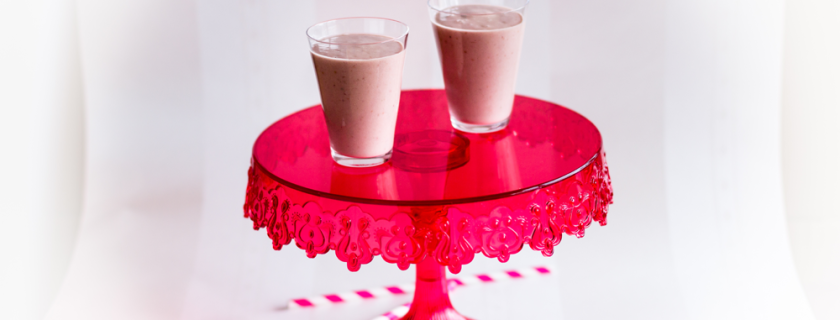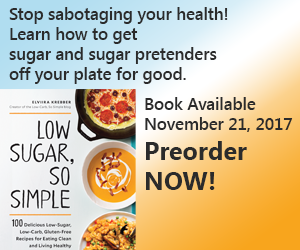This recipe makes two servings of thick, delicious smoothie, that you can use as meal replacement, or even better: this smoothie IS a meal! Not replacement. In case you are not in the mood for inviting a friend to enjoy the smoothie with you, divide it into two meals or if you are really hungry, gulp the whole thing down and be prepared for hours-long satiety (and upset stomach in case your body is not used to MCT oil! So it might be a good idea to reduce the amount of MCT oil to 1 tablespoon if you are planning to consume everything at once).
Brain power from MCT oil
As you notice, this recipe uses MCT oil. It’s well-known from Bulletproof Coffee, aka the “butter coffee” that has been trendy for some years now, thanks to Dave Asprey.
But what is actually MCT oil and why is it so good for your brain? MCT oil — like the name suggests — consists of medium chain triglycerides. MCT oil is made from coconut oil. Coconut oil contains lauric acid, too, that is not technically a medium chain triglyceride, but long chain one, even it’s erroneously labeled as medium chain in product labels and things like that.
The real power lies in the actual medium chain triglycerides, like caprylic acid (C8) and capric acid (C10). Unlike lauric acid, caprylic acid doesn’t get processed in your liver, it will be converted into energy almost immediately. Capric acid is converted into energy slightly slower, however still fast and without liver involved in the process. These two substances make the best energy for your brain: ketones. Your brain consumes ketones far more eagerly than sugar (glucose) that the standard diet contains in excess amounts. Ketogenic diet is the best one for your brains and helps with all kinds of neurological problems including anxiety and panic attacks.
But back to other benefits of MCT oil. Both caprylic acid and capric acid have antimicrobial benefits, even more than lauric acid which is often marketed as a real antimicrobial substance. The truth is, that true MCT oil (with mainly caprylic acid and capric acid) has stronger antimicrobial effects and is great against for example candida.
Coconut oil is indeed delicious and beneficial in many ways, but it contains just a few percentages of caprylic acid and capric acid, but over 50% lauric acid. That’s why choosing a good-quality MCT oil with enough caprylic acid and capric acid pays off. Your brain will thank you! And your body, too, as this wonderful oil helps you burn fat effectively.
3 Proven Steps to Anxiety Free Life
About grains…
I have one wish for you: please do yourself a favor and never fall into that whole grain BS. Grains contain so much harmful stuff, that I recommend everybody try out gluten-free, grain-free diet (paleo and ketogenic are great options) at least one month, preferably two, and then see what is your individual reaction to grains if you consume them again. If you get problems, that’s a clear sign that you’d better be completely without grains. If you don’t get any problems, like abdominal pain, bloating, panic attacks, depression or other mental or physical problems, by all means consume those a bit healthier grains like quinoa, but please keep your eye on your reactions. That you can tolerate grains now doesn’t mean that you will necessarily tolerate them in the future. The harmful substances just pile up in your body and the excess amount of carbs constantly attacking your delicate organs might make you carb-intolerant, i.e. suffering from a metabolic syndrome which might eventually lead into diabetes and heart diseases. So be careful.
Don’t be afraid that you would miss some important nutrients if you omit grains and gluten from your diet. Just the opposite! Look at all those nutrient-dense ingredients you can add to your diet. Grains are pretty much starch, and starch lacks nutrients. If you follow gluten-free diet (which you should at least try out!), it’s important to omit all commercial gluten-free ready meals and baked goods, as those are usually full of starch, unhealthy fats and food additives. This smoothie is grain-free and starch-free to ensure the most valuable nutrients flowing into your brain and improving your condition.
…and proteins…
When it comes to choosing protein to your smoothie, there are several options you can choose. I recommend eggwhite protein. It’s healthy and also well-tolerated even if you are dairy-intolerant. Naturally, if you are allergic to eggs, eggwhite protein is out of question. No worries, you have plenty of other choices for protein, too. You can naturally use any plant-based protein if you like. Rice, hemp and pea proteins are great. And, if you tolerate dairy, whey protein is an unbeatable option. Whey protein is also lower in carbs, compared to plant-based proteins. It also has a more soluble texture and it’s almost tasteless, when the plant-based proteins often might feel gritty or taste floury. Another thing, when I tried out this smoothie with rice protein, it developed a really bitter taste after a couple of hours. I actually tried that several times, and every time I ended up with a bitter-tasting smoothie in case I stored it even for a couple of hours. It was inedible and I ended up in throwing it to the dustbin. Just to let you know if you plan to use rice protein.
If you happen to find chocolate-flavored protein, by all means use it and omit the cocoa powder. Or, you can use whatever flavor you happen to have at hand and what you prefer. Vanilla-flavored protein is also a great option.
In my opinion 1 tablespoon dark, unsweetened cocoa powder gives the smoothie a delicious note of chocolate which is a perfect match with raspberry, that’s why I usually add some cocoa powder with otherwise so plain and neutral-tasting eggwhite protein. Or even if I’m using vanilla-flavored whey protein, cocoa powder makes a wonderful addition and it’s rich in antioxidants, too. All good for your brain.
…and a little bit of dairy, too
Since so many people cannot tolerate dairy, I again recommend you to try out dairy-free diet at least for one month, preferably two, and then try adding some dairy to your diet to see if it causes any symptoms. It actually is not that simple, some people who cannot tolerate dairy, can consume raw milk and cheeses made from raw milk without any problems, or they stand fermented dairy products like yogurt and kefir. It’s actually your responsibility to find out your individual tolerance as nobody can tell what you can tolerate and what not. So, take responsibility for your own health and don’t expect doctors to do all for you! That’s why I’m also all about self help programs after curing my decades-lasting anxiety all myself.
Healthy sweeteners, are there any?
There are many misconceptions when it comes to sweeteners. First of all, there exist all kinds of sweeteners, and they are usually grouped to either artificial sweeteners or natural sweeteners. Artificial sweeteners are for example aspartame, sucralose, saccharin and acesulphame potassium. Natural sweeteners are for example stevia, erythritol and xylitol. These are just a few examples, there are numerous other sweeteners available. Many commercial sugar-free products use sugar alcohols like maltitol, sorbitol, isomalt, and some use the healthiest options, xylitol, erythritol and stevia.
Sugar alcohols can cause digestion problems, though erythritol is the most tolerated one and that’s why I use it also in this recipe. Powdered erythritol dissolves in cold liquid, unlike erythritol crystals that might give gritty mouthfeeling. However, if you have a powerful blender, you can use erythritol crystals as well, or easily grind your powdered erythritol in seconds. Personally, I use Blendtec blender with Twister jar and Grind Grains program to get wonderfully powdered erythritol in just a few seconds.
If you cannot tolerate erythritol, you can replace it with another healthy sweetener, stevia, if you like. Or, if you want to get the healthiest possible option, omit the sweetener altogether. It takes some time from your taste buds (and brain…) to adjust to not using sugar or sweeteners, but if you would aim at the best health, omitting all sweeteners from your diet is the best option.
This smoothie is not very sweet, so feel free to adjust the sweetness to your liking.
3 Proven Steps to Anxiety Free Life
Berry power
I was really pondering what kinds of berries I would use for this smoothie. Finally, I choose raspberries not only because I have an ample amount of them in my freezer, but because they burst both flavors and nutrients, and are surprisingly low in carbs. Actually, raspberries contain the lowest amount of carbs after cranberries. And they are delicious! If you despise raspberry seeds, be sure to use again a powerful enough blender that breaks the seeds and grinds them into a smooth result. Remember that seeds contain also important nutrients and oils that won’t be released if you consume whole seeds.
But finally, since you must eagerly be waiting for the recipe, here it is. Enjoy!
[amd-zlrecipe-recipe:3]






